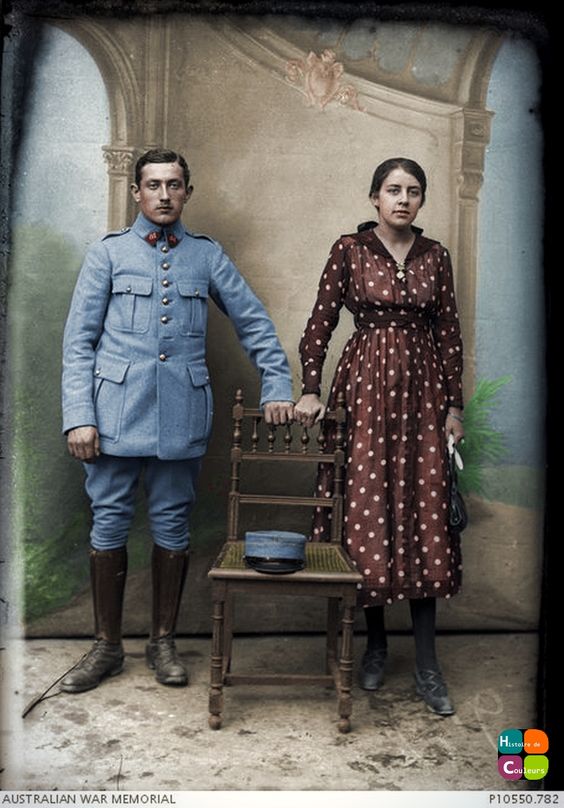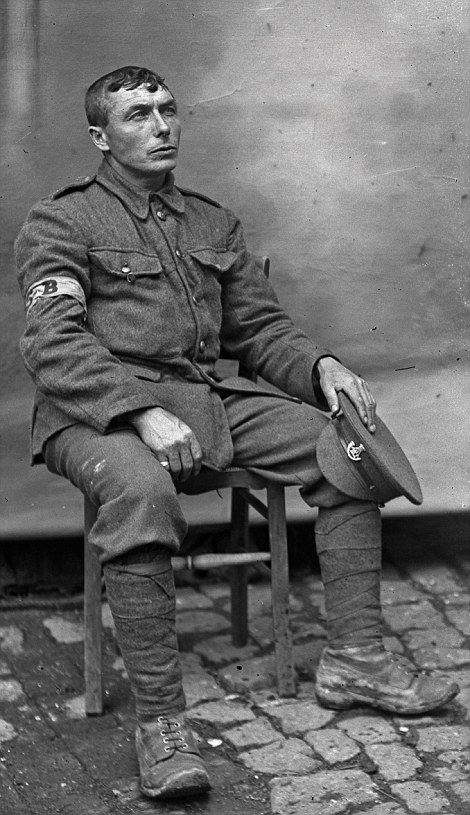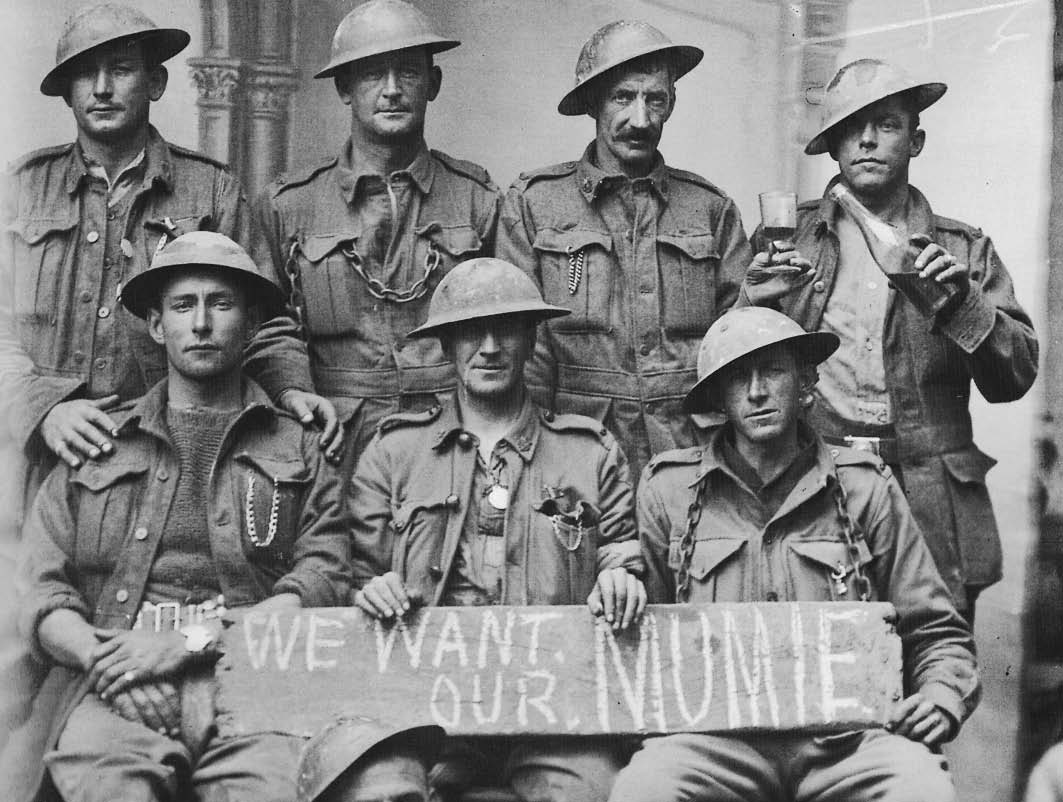AWM Great War expert Peter Burness, found over 4000 fragile photographic glass plates in a dusty chest, situated in the attic of a ramshackle farmhouse in Vignacourt. Photographers Louis and Antoinette Thuillier, whether they were aware of it at the time, have left future generations an invaluable link to the past.

Louis and Antoinette Thuillier : (C) Histoire de Couleurs
The Lost Photographs of Vignacourt, Discovered in the Attic of the Thuillier Farmhouse – Source
Vignacourt:
Vignacourt lies northeast of Amiens in Northern France, located not far from the then front line in World War One. Vignacourt being out of range of field artillery served as a rest area for allied troops recovering or preparing for frontline duties.
At that time Vignacourt was a hive of activity. Surrounding fields hosted training grounds and camps for thousands of allied troops. At night Vignacourt’s estaminet’s were alive with rowdy banter. Songs like ” The Bells of Hell” and “If the Sergeant Steals Your Rum” would be choice favourites.
Troops not long out of the line could relax with a sing-song and a plate of egg and chips helped down with local beer and wine. For many a soldier, the rowdy banter of the estaminet would ease the nerves taught from front line duties.
A Stretcher Bearer of the Durham Light Infantry -Thuillier Collection.
Louis and Antoinette Thuillier:
For the locals of Vignacourt like many other towns and villages throughout France and Flanders, the Great War was also an opportunity for free enterprise. Locals Louis Thuillier and his wife Antoinette turned their home into an outdoor studio and advertised for soldiers to have their photographs taken.
Overtime the Thuillier’s captured thousands of images of Australian and allied soldiers. Captured on glass plates these images were printed onto postcards. This gave a valuable link to loved ones back home. For many families, it would be the last image they would see of their father, brother or son.
Temporary Captain Harry Hartley walks down the steps of the Church of Saint-Firmin, Rue Godard Dubuc, Vignacourt, with his new bride Simone Marie Pécourt, a local Vignacourt woman. 5 January 1918 (C) Source
WW1 Casualties. Myth & Poppycock:
With catastrophic casualties, shamelessly minimised today by “historians” like the BBCs Dan Snow, who states “9 out of 10 British Tommies survived the trenches”: a “fact” now taught in British Schools.
The truth, however, for allied front line troops is more than one-third of the men photographed above will likely have been killed before the war was over.
A typical allied Infantry Division like the 55th West Lancashire Division saw between Jan 3rd 1916 and Nov 11th 1918, 2,870 Officers and 61,053 other ranks pass through the division. 1581 Officers (55%) were recorded as casualties, and 34,120 other ranks (55%) were also recorded as casualties.
Whilst some may have been wounded multiple times and counted as casualties more than once, this is a small percentage and will have a negligible influence on the statistics.
If we understand that not all troops within a Division were infantry and did regular trench duties, at 55% casualty rate for the Division on a whole, what was the casualty rate for the infantry alone?
Over those 1,044 days, the three infantry brigades of the 55th West Lancashire Division accounted for 85% of those casualties. Nearly 34% (10,267) were recorded as killed, died or missing. Source
Original grave cross of Lieutenant Reginald John Hunter,19th Battalion, AIF – Thuillier Collection.
Thuillier collection:
Nearly a century later, following rumours of a secret collection of photographs; AWM Great War expert Peter Burness, found over 4000 fragile Photographic glass plates, in a dusty chest, in the attic of a ramshackle farmhouse in Vignacourt.
Australian Troops – Tough Lives Bred Tough Men -Thuillier Collection
Louis Thuillier returned to his Vignacourt farmhouse in 1916 after two years of military service. It was about this time when many Australian troops newly arrived from the Gallipoli campaign, found themselves in Vignacourt. A great many of the photographs depict Australian soldiers from the 1st and 2nd divisions in November and December 1916, survivors of Pozieres and Fromelles.
It is believed that there may be up to several thousand glass plates of allied soldiers still out there undiscovered. The current Thuillier collection has now been handed over to the AWM. Many of the images can be viewed here.

War Memorial Vignacourt Source
“Brothers in arms of the British Army, fallen on the field of honour, sleep in peace; we are watching over you.”
For the locals of Vignacourt, acknowledgement of the allies sacrifice to ensure their liberty, is evident in the inscription upon the statue of the French soldier, which stands within the British War Cemetery on the outskirts of Vignacourt:
“Freres D’armes de L’Armee Britannique, tombes au Champ D’Honneur, dormez en paix. Nous veillons sur vous.” (“Brothers in arms of the British Army, fallen on the field of honour, sleep in peace; we are watching over you.”).
Photographers Louis and Antoinette Thuillier, whether they were aware of it at the time, have left future generations an invaluable link to the past. Through this unique photographic archive, many stories behind these images have been revealed in these books:
However, over the months and years to come, many more will come to light, and many families are yet to discover a long-lost relative within this snapshot of time.
The website is self-funded, and my work is free. All profits from the sites product links go to SightSavers; if you have enjoyed any aspect of this site please consider a giving a donation here. No one should go blind from avoidable causes. How many people’s sight will you help us save today?
Fragmented Memory 🙂








My family in Tasmania have just been made aware that Private James Dillon had his portrait taken at vignacourt1418
What an incredible archive the farm turned out to be
We are so moved by the honour the French still show to these Lost Diggers
Hi Jillian,
Thanks so much for sharing. What an awesome portrait a real Digger! Its so fantastic that families have been traced and they are reunited with those generations past. He certainly went through some really tough fighting, I’ve been to some of the places he fought, Polygon Wood and Passchendael. I wonder where in Britain he recovered from gas poisoning?
Link to Private James Dillon portrait and bio